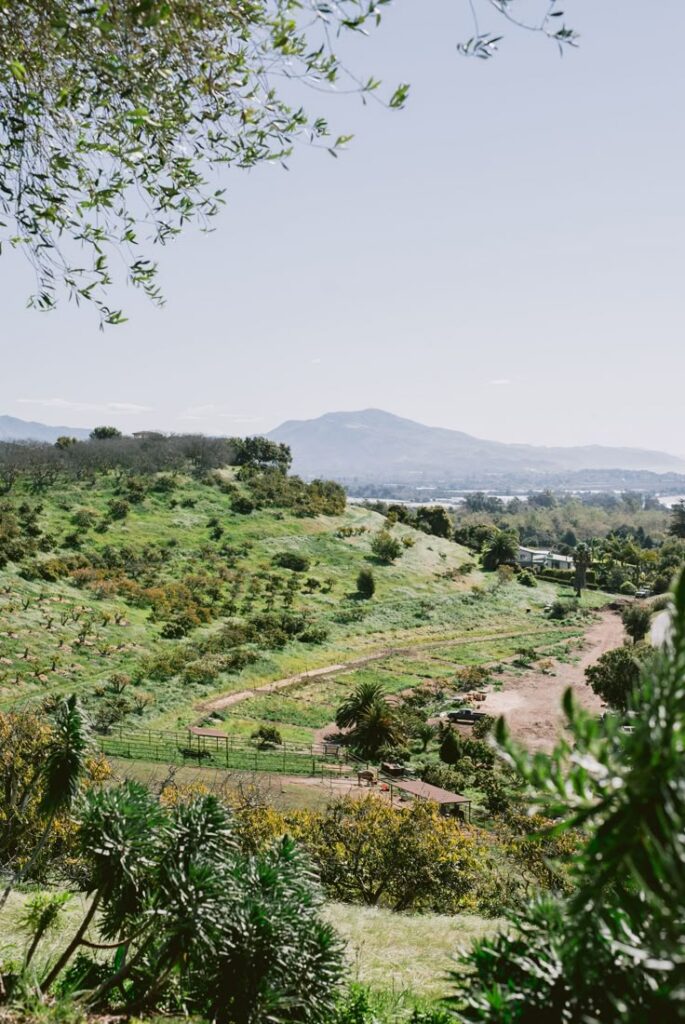Introduction: Why Agroforestry Matters Now
Agriculture has always been about balance: humans with nature, crops with soil, and communities with food. Yet modern farming often disrupted this balance—clearing forests for monocultures, exhausting soils, and contributing to climate change.
Enter agroforestry: a practice as old as farming itself, yet one of the most creative and forward-looking strategies of our time. By combining trees, crops, and livestock on the same land, agroforestry reimagines agriculture as an ecosystem rather than a factory.
For beginners, agroforestry can seem simple—planting trees among crops. But for professionals, it represents a game-changing strategy for productivity, sustainability, and resilience.
This guide explores agroforestry in full—its meaning, benefits, models, challenges, and its role in shaping the future of global food systems.
What Is Agroforestry?
Definition:
Agroforestry is a land-use system where trees or shrubs are grown alongside crops and/or livestock in the same area. The goal is to create synergies between agriculture and forestry—improving productivity, sustainability, and resilience of farming systems.
👉 Put simply: Agroforestry means farming with trees.
Unlike conventional farming, agroforestry works with nature’s diversity, using ecological design to enhance soil, conserve water, store carbon, and support biodiversity.
Why Agroforestry Is a Creative Strategy in Agriculture
Agroforestry is not just a technique; it’s a strategy that addresses multiple challenges at once:
- Food Security: Boosts yields by diversifying crops and providing shade, shelter, and soil fertility.
- Climate Change Mitigation: Trees capture carbon, reducing greenhouse gas emissions.
- Economic Stability: Farmers gain multiple income streams from fruits, nuts, timber, fodder, and crops.
- Soil & Water Conservation: Roots prevent erosion, while shade reduces water loss.
- Biodiversity: Trees provide habitats for pollinators and beneficial species.
It is a creative solution because it transforms farming from extractive to regenerative—turning land into a living system of interdependent parts.
Types of Agroforestry Systems
Agroforestry can take many forms, depending on geography, culture, and purpose. Here are the most common models:
1. Alley Cropping
Crops are planted between rows of trees or shrubs.
- Benefits: Wind protection, improved soil fertility, diversified income.
- Example: Maize grown between rows of nitrogen-fixing acacia trees.
2. Silvopasture
Combines trees, forage, and livestock on the same land.
- Benefits: Shade for animals, improved pasture, timber production.
- Example: Cattle grazing in shaded grasslands with walnut trees.
3. Windbreaks & Shelterbelts
Trees planted in rows around fields.
- Benefits: Reduce wind erosion, protect crops, conserve water.
- Example: Rows of poplar trees protecting wheat fields.
4. Forest Farming
Cultivating high-value crops under a managed forest canopy.
- Benefits: Shade-grown crops (coffee, cocoa, medicinal plants).
- Example: Cocoa plantations under native rainforest trees.
5. Home Gardens (Agroforestry Gardens)
Diverse trees, crops, and livestock integrated around households.
- Benefits: Year-round food and income, high biodiversity.
- Example: Mango, banana, and cassava grown alongside poultry.
Benefits of Agroforestry
Environmental Benefits
- Carbon Sequestration: Natural climate solution.
- Erosion Control: Deep tree roots stabilize soil.
- Water Management: Trees improve infiltration and reduce runoff.
- Biodiversity Conservation: Restores ecological balance.
Economic Benefits
- Diversified Income: Multiple products (timber, fruit, fodder, honey).
- Risk Reduction: Farmers less vulnerable to market or climate shocks.
- Employment Creation: Tree planting, harvesting, and processing.
Social Benefits
- Nutrition & Food Security: Year-round food sources.
- Community Resilience: Stronger rural economies.
- Cultural Value: Many indigenous communities thrive on agroforestry traditions.
Challenges in Agroforestry
Despite its benefits, agroforestry faces hurdles:
- Long Payback Periods: Trees take years to mature.
- Knowledge Gaps: Farmers may lack technical expertise.
- Land Tenure Issues: Farmers without secure land rights may be excluded.
- Policy Barriers: Agricultural and forestry laws often conflict.
- Initial Investment: Requires upfront resources in seedlings, labor, and management.
Agroforestry Around the World
Agroforestry is practiced globally, adapted to local conditions:
- Africa: Farmer-Managed Natural Regeneration (FMNR) in Niger has restored 5 million hectares of degraded land.
- Asia: Shade-grown coffee in Vietnam boosts income and biodiversity.
- Europe: Alley cropping systems in France improve soil fertility and carbon storage.
- North America: Silvopasture is gaining traction in the U.S. for climate-smart cattle ranching.
- Latin America: In the Amazon, agroforestry cocoa systems combine conservation with livelihoods.
The Future of Agroforestry
Agroforestry is poised to play a transformational role in global agriculture:
- Climate-Smart Agriculture: Scaling agroforestry to meet carbon reduction targets.
- Digital Agroforestry: Using satellite imagery, drones, and AI to monitor tree-crop interactions.
- Policy Integration: Governments embedding agroforestry in food security and climate strategies.
- Private Sector Partnerships: Companies investing in tree-based supply chains (coffee, cocoa, palm oil).
- Agroforestry Finance: Green bonds, carbon credits, and ESG investments fueling adoption.
Agroforestry is no longer just a sustainable practice—it is a strategic business model for the 21st century.
Conclusion: Agroforestry as a Creative Path Forward
Agroforestry blends ancient wisdom with modern innovation. By integrating trees with crops and livestock, it delivers on the triple bottom line: people, planet, and profit.
For farmers, it means resilience and multiple income streams.
For businesses, it means sustainable supply chains.
For societies, it means restored landscapes and food security.
Agroforestry is not only a farming practice. It is a creative strategy for the future of agriculture—a pathway to regenerate the earth while feeding its people.



